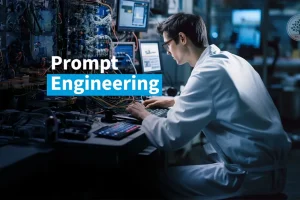Imagine training an AI model to recognize a new species of bird with just a handful of pictures. Sounds impossible, right? Well, that’s the challenge addressed by few-shot learning, a rapidly evolving branch of artificial intelligence that empowers models to excel with minimal data.
Unlike traditional deep learning, which thrives on massive datasets, few-shot learning aims to replicate human-like learning – quickly grasping new concepts from just a few examples. This holds immense potential for several reasons:
- Data Scarcity: Many real-world tasks suffer from limited labeled data, especially in niche domains like medical diagnosis or rare wildlife identification. Few-shot learning offers a solution.
- Cost and Efficiency: Labeling data can be expensive and time-consuming. Few-shot learning reduces this burden, making AI development more efficient and accessible.
- Privacy Concerns: Collecting vast amounts of data raises privacy concerns. Few-shot learning can mitigate these issues by requiring less data.
Intrigued? Let’s explore the exciting advancements in few-shot learning and their potential impact on the future of AI:
1. Meta-Learning: Learning to Learn
Meta-learning, a subset of few-shot learning, focuses on training models that can “learn how to learn.” This involves training on a meta-dataset consisting of many small learning tasks. In each task, the model receives few examples and learns to adapt its parameters to perform well on that specific task. When presented with a new task, the model leverages its meta-learning experience to adapt quickly, requiring only a few new examples.
Model-Agnostic Meta-Learning (MAML)
This popular approach learns an initial parameterization that can be quickly fine-tuned for new tasks with few examples. Imagine learning the basics of car identification, then easily adapting to identify trucks with minimal additional data.
Prototypical Networks
These networks learn a prototype representation for each class based on the few examples provided. New data points are then compared to these prototypes for classification.
2. Metric Learning: Learning Similarity Measures
Few-shot learning often relies on effective similarity measures to compare new data points to the limited examples seen during training. Metric learning focuses on designing or learning these measures to accurately gauge the similarity between data points, even with few examples.
Siamese Networks
These networks process pairs of data points and learn to predict if they belong to the same class. This helps the model refine its understanding of intra-class and inter-class similarities.
Triplet Loss
This technique encourages the model to embed similar data points close together and dissimilar ones far apart in a low-dimensional space, aiding in accurate classification.
3. Pre-trained Models and Transfer Learning
Leveraging knowledge learned from vast datasets through pre-trained models is a powerful strategy in few-shot learning. These models capture general concepts and features applicable to various tasks, even with limited data.
Fine-tuning
Pre-trained models like ResNet or BERT can be fine-tuned on the new few-shot learning task, leveraging their pre-learned knowledge to adapt faster and perform better.
Knowledge Distillation
This technique involves transferring knowledge from a complex, pre-trained model to a smaller, lightweight model designed for few-shot learning. This enables efficient deployment on resource-constrained devices.
4. Beyond Classification: Few-Shot Learning Applications
While image classification is a major focus, few-shot learning extends to broader applications:
Natural Language Processing
Few-shot learning can be used for tasks like sentiment analysis, text summarization, and even creative writing, even with limited training data.
Robotics
Imagine robots learning new skills like object manipulation or navigation with just a few demonstrations, thanks to few-shot learning.
Drug Discovery
Identifying promising drug candidates can be accelerated by analyzing molecular structures using few-shot learning with limited available data.
The Future of Few-Shot Learning
Few-shot learning is still in its early stages, but the rapid advancements are promising. Research areas like incorporating prior knowledge, handling noisy data, and scaling to multi-class scenarios are actively explored. As the field matures, expect to see:
- Improved Generalizability: Models better capable of adapting to unseen data and real-world scenarios.
- Wider Application: Integration of few-shot learning into real-world systems across various domains.
- Privacy-Preserving AI: Development of secure and privacy-friendly few-shot learning algorithms.
The ability to learn with minimal data offers a paradigm shift in AI development. Few-shot learning holds the key to unlocking the potential of AI in diverse domains, paving the way for a future where intelligent systems learn and adapt quickly, even with limited resources.
















Add Comment